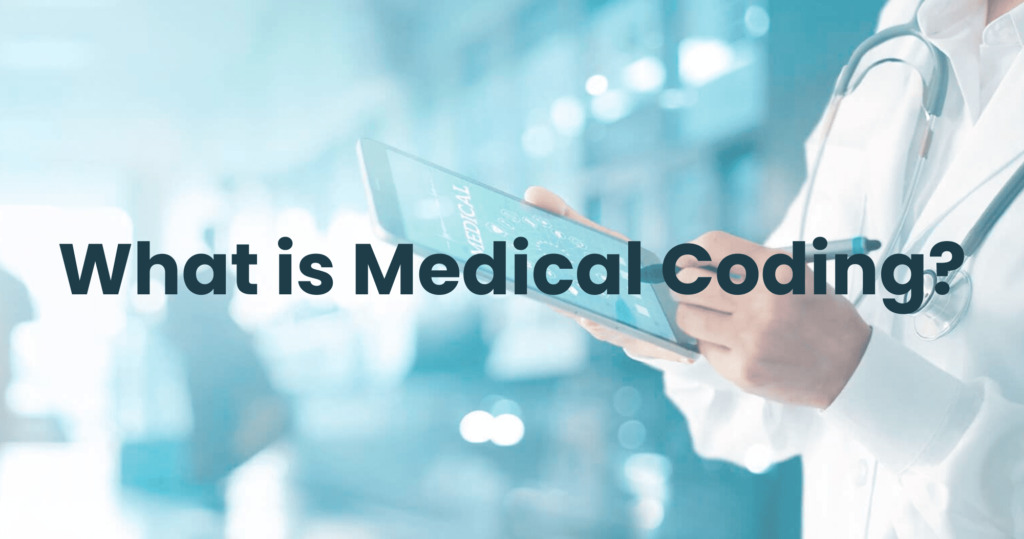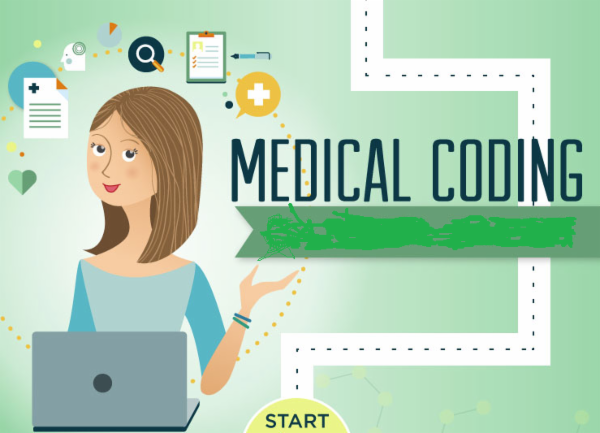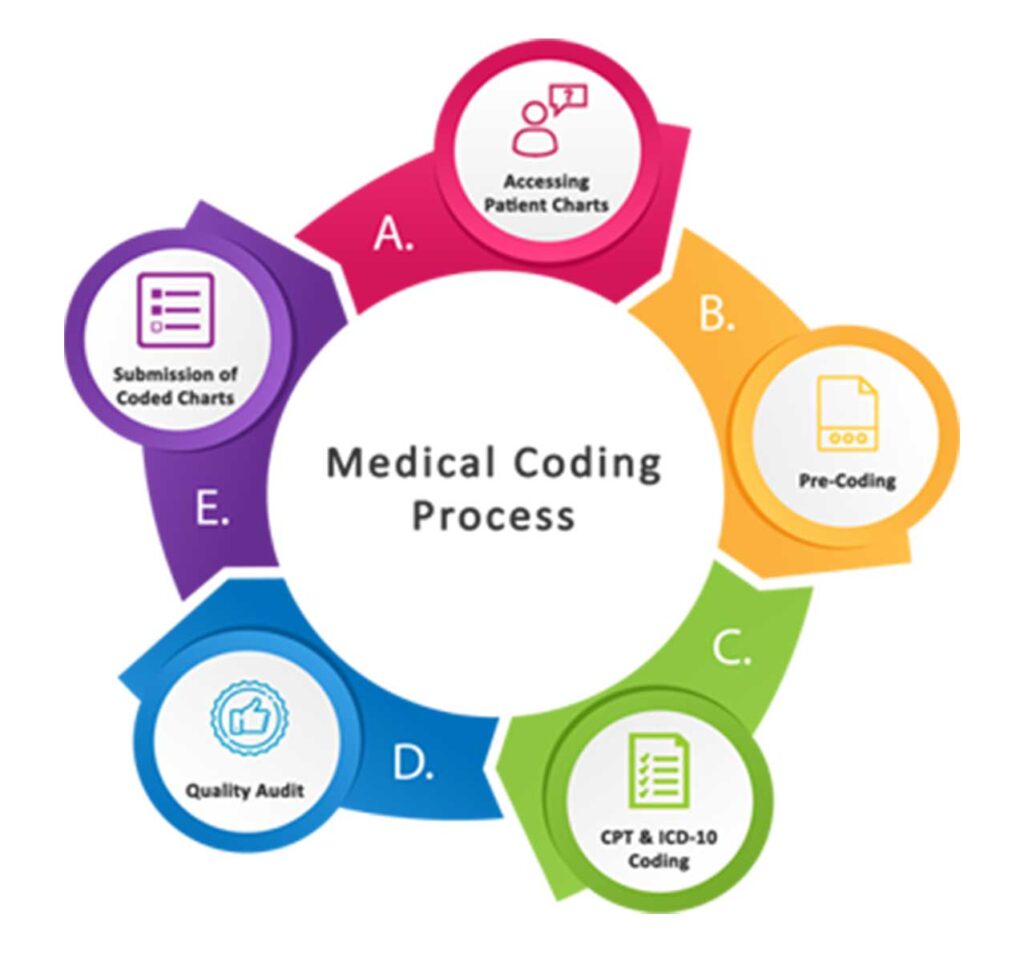What Is Medical Coding? Salary of Medical coder

Medical billing and coding specialists employ technology to assist healthcare providers in updating patient information and obtaining payment for services done. Workers in this sector assign standard codes to each diagnostic and medical procedure and enter them into a patient’s medical record.
Did You know?
In India, the salary of a Medical Coder ranges between ₹1.5 Lakhs and ₹4.3 Lakhs, with an average salary of ₹2.5 Lakhs per year.
What is Medical Coding?
The conversion of medical diagnoses, treatments, health treatments, and equipment into universal medical alphanumeric codes is known as medical coding. The diagnoses and procedure codes are derived from medical record documentation, such as physician’s notes transcriptions, laboratory and radiologic reports, etc. Medical coding professionals assist with the medical billing process, including abstracting information from documents, assigning appropriate codes, and preparing a claim to be reimbursed by insurance companies.
When you visit a healthcare professional, medical coding occurs. The healthcare provider examines your complaint and ,medical history determines what is wrong and how to treat you, and records your appointment. That paperwork is not just the patient’s permanent record but also the means through which the healthcare provider is compensated.
Scope and Growth of Medical Coding
Not only for compensation but also to ensure high-quality care in future visits, a patient’s diagnosis, test findings, and medication must be documented. Personal health information accompanies a patient through successive concerns and therapies, and it must be understandable.
However, there are thousands of ailments, diseases, accidents, and causes of mortality to consider. There are also hundreds of services provided by providers to track, as well as an equal number of injectable medications and supplies. These are classified by medical code for simpler reporting and tracking. Each disease, process, and tool has various classifications, acronyms, nicknames, and eponyms in healthcare. Medical coding unifies the language and presentation of all of these elements, making them easier to comprehend, maintain, and modify.

How to Get into Medical Coding
Step 1 (Post Secondary Education)
- After high school, aspiring coders can choose between a certificate program, an associate’s degree, or a bachelor’s degree for their college studies.
- A certificate program is the quickest way to get into the field, as most are completed in less than a year. These are concentrated study programs that teach the fundamentals of disease processes, therapeutic options, terminology, bodily systems, and ICD-10 coding. Medical office technology, billing procedures, and regulatory requirements will all be taught to students. These schools’ curriculum is aimed at training kids for immediate employment and official credentialing exams.
- An associate’s degree in healthcare management or health information management is a trustworthy and versatile option for prospective medical coders. Students obtain a well-rounded liberal arts education that enhances their writing, communication, and critical thinking skills and the medical coding principles covered in a certificate program.
- While an associate’s degree takes longer to finish than a certificate (about two years), companies may be more interested in hiring applicants who have official degrees on their resumes. Should graduates wish to pursue additional study in the field of healthcare, an associate’s degree can readily be transferred to a bachelor’s degree program.
- Working in medical coding requires a bachelor’s degree in healthcare administration or health information management, which is a lengthier but more comprehensive path. The bachelor’s degree provides exposure to the larger and more sophisticated topics in healthcare management, in addition to the core grasp of medical coding found in certificate programs and on top of the soft skills taught in the associate’s degree. Human resources, health policy, legislative compliance, data analytics, and project management are among the topics covered by graduates. Even though most bachelor’s degrees take four years to finish, medical coders who pursue this path are not only at the top of employers’ hiring lists but are also more likely to hold leadership positions and earn higher pay.
Step 2 (Preliminary six month credentialing)
- Almost all medical coding education programs educate graduates for two basic credentialing examinations, which they can take right away. Both are provided by AHIMA.
- The first alternative is to get a Certified Coding Associate (CCA) credential, which is a nationally recognised achievement standard in health information management. Before taking this exam, AHIMA advises that applicants have six months of work experience. However, it is not required if they have finished an AHIMA-approved or otherwise rigorous medical coding education program.
- The credentialing exam comprises 90 to 115 multiple-choice questions that assess basic competency, dedication, and capability in both hospital and physician-based practices. For AHIMA members, the application fee is ₹15,400 ($199), and for non-members, it is ₹23,144 ($299). The CCA accreditation can help a medical coder stand out from the crowd and gain better work opportunities with greater pay.
- The Registered Health Information Technician (RHIT) certificate is the second choice. While no job experience is required for this certification, it does need at least an associate’s degree in health information management from a CAHIIM-accredited program.
- The 3.5-hour credentialing exam includes 130-160 multiple-choice questions that assess skill in assuring the accuracy of medical records, assembling and analysing patient data using computer applications and coding diagnoses and procedures in patient records for payment and research. Non-AHIMA members pay ₹23,144 ($299), while AHIMA members pay ₹15,400 ($199). The RHIT certificate, like the CCA, can help you get a better job and earn more money.

Step 3 (Gaining one to two years of work experience)
- It’s time for new medical coders to step into the office and begin to work after earning their certificate or degree. To find work, professionals should use the available resources to them at their university and within their peer network. Joining a professional organisation like the AHIMA or the AAPC might open doors to new job prospects and career resources.
- Furthermore, getting work experience aids young professionals in determining their preferred work setting—a hospital or a physician’s office setting—which will aid them in selecting additional professional credentials.
Step 4 (Additional Credentials)
- Further professional credentials from AHIMA, such as the Certified Coding Specialist (CCS) or the Certified Coding Specialist Physician-Based (CCS-P), become accessible after a medical coder has achieved some job experience.
- The CCS certificate is for coders who specialise in classifying medical data for patients, primarily in hospitals. It assesses not only nomenclature, disease processes, and pharmacology knowledge but also proficiency with the ICD-10-CM and CPT/HCPCS coding systems.
- A medical coder with the CCS-P certificate specialises in physician-based settings. The CCS-P exam assesses mastery-level comprehension rather than entry-level skills in the ICD-10-CM, HCPCS Level II, and CPT coding systems.
- The related exam for both credentials comprises 115-140 multiple-choice questions (for CCS) and 97-121 (for CCS-P) numerous questions and eight medical situations that require applicants to choose from a variety of medical codes. Both tests demand two years of professional experience or one year of professional experience with a secondary credential. However, candidates who currently hold an RHIT credential are exempt from the work experience requirement.
Step 5 (Pursue continuing education)
- The credentials you acquire in steps two, and four are only good for a limited time. AHIMA requires medical coders to requalify every two years to maintain a high degree of quality. Anyone with a CCA, CCS, or CCS-P must undertake 20 continuing education units (CEUs) and two annual coding self-reviews (each worth five CEUs) during each recertification cycle.
- Medical coders that hold an RHIT certification only need to complete 20 CEUs. Every two years, persons with two AHIMA certifications must complete 30 CEUs. AHIMA meetings, formal educational programs, teleseminars, presented lectures, published academic work, individual research, and more are all examples of continuing education initiatives. The AHIMA recertification handbook contains a complete list.
Institutes that Offers a Degree in Medical Coding
Some of the best medical coding institutes in India are as follows –
- Henry Harvin
- Xpert Health group
- Medeos Healthcare Solutions
- Shri Krishna University
- Abroadseat.com
- Genus healthcare Solutions
- Magnet Medical Coding Solutions
- Institute of Medical Coding and Billing
- Tulip Healthcare Solutions
- The Coding Academy
- Pinnacle Coding Academy
- Udemy
- Resolve Medical Code

Functions of Medical Coding
Medical codes convert that information into standardised codes that inform payers of the following:
- The patient’s condition
- Medical necessity for the patient’s therapies, services, or supplies
- Therapies, services, and supplies that the patient receives
- Any exceptional events or medical conditions that had an impact on those treatments or services
- To succeed, medical coding necessitates an understanding of anatomy, physiology, and characteristics of services, as well as payer rules and regulations.
Medical Coding Job
Medical billing and coding positions, like others in the healthcare sector, are expanding. Medical secretaries, including medical billing and coding professionals, are expected to see a 22% growth in employment by the year 2026, according to the BLS. This rate is substantially higher than the national average, and it will result in around 1,29,000 new job openings in the following years.
Medical billing and coding could be a suitable option based on the current job outlook if expected job opportunities are crucial in your career hunt. People will require greater medical care as the population ages. Increased demand for these services means more medical record updates and insurance claims to handle.
More healthcare claims can mean more demand for your skillset if you work in medical billing and coding. Someone will have to organise and code all of the data needed to process each medical claim.
And as healthcare companies increasingly rely on electronic tools to manage their practices, qualified personnel who understand how to use this technology will be in high demand. Once you’ve completed your training and certification, the faster-than-average employment growth in this field should speak well for your long-term job chances.
A Career in Medical Coding
When deciding on a career route, there are numerous factors to consider. If you’re considering a job in medical billing and coding, make sure you do your homework and ask all of the pertinent questions.
You’ll want to find out how much the job pays, what it entails, and how the field is likely to develop in the future. However, there are additional factors that may influence your job happiness in medical billing and coding employment, in addition to the job outlook and work environment.
To see if a job in medical billing and coding is right for you, ask yourself the following questions:
- Is it possible for me to carefully follow instructions?
- Can I protect the privacy and confidentiality of my patients?
- Am I at ease with technology?
- Would I be able to work for long periods at a computer?
- Do I get along with others?
- Can I maintain my composure in stressful situations such as billing errors?
- Is it possible for me to maintain my records nicely organised?
- Do I have the interpersonal skills to connect with coworkers, patients, and insurance companies effectively?
- Am I paying attention to the tiniest details?
If you replied “yes” to all of the above questions, you might be a good fit for a career in medical billing and coding.

Job Profile of Medical Coder
Medical billing and coding experts are required in every aspect of healthcare. They arrange health-related data and ensure that everyone in the healthcare facility has access to it. Although some businesses save paper files, this profession often entails working with computerised data. Medical billing and coding professionals should be conversant with computers because so much of their work is done online.
Another important aspect of this work is ensuring that all medical and billing data is correct. It’s critical to have accurate data to guarantee that patients get the care they need and that insurers get the data they need to assess and cover claims.
Medical billers and coders also must ensure that the patient information they handle is kept safe at all times. Patient confidentiality is mandated by law. Thus medical billing and coding experts must take precautions to ensure that the information they handle is secure.
One of the essential areas for medical billing and coding work is knowledge of classification systems. To categorise all patient information, these experts employ universal codes.
This information is used to assist healthcare professionals in receiving reimbursement from insurance companies for medical operations. The codes are also used to standardise the medical histories and treatment data of patients for physician records. This is especially useful when diagnosing and treating patients involves numerous team members and/or specialists.
Duration of the Medical Coding Course
The length of time it takes to become a medical coder is primarily determined by the route you take to get there. If you intend to pursue a certificate, diploma, or degree, the amount of time will be determined by the program’s duration.
Many diploma programs take less than a year to finish. If you plan to enrol in an associate degree program, you should be able to finish your training and receive your degree in less than two years.
If you want to pursue CPC certification, you’ll need to budget extra time to take the exam and meet the eligibility requirements. If you pass the exam but lack the required work experience for full CPC status, you will be designated as a CPC Apprentice (CPC-A) until you provide proof of experience and/or education.
Online Medical Coding Course
If you want to become a medical coder, online education programs can help you prepare for the exam in the same way that classroom training can.
While you can take lessons and prepare for your medical coding certificate program online, most certifying bodies insist on in-person testing.
Conclusion
For job searchers, healthcare is among the quickest industries. With a profession in medical billing and coding, you can work in the flourishing healthcare field even if you have no passion for patient care. Medical billing and coding are crucial administrative functions in the healthcare industry. Careers in healthcare support jobs are predicted to rise in tandem with the larger healthcare sector. The above article provides depth analysis of the medical coding program, job outlook, salary offered, etc.
Follow me for the latest updates, news blogs, and articles related to micro, small and medium businesses (MSMEs), business tips, income tax, GST, salary, and accounting.